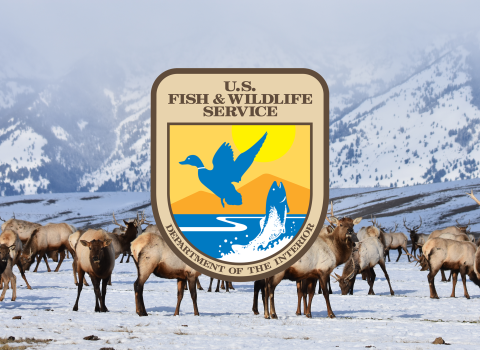San Bernard National Wildlife Refuge (NWR), home to some of the only forested wetlands adjacent to the Gulf of Mexico in Texas, gained 4,628 acres of Columbia Bottomlands habitat for the benefit of resident and migratory wildlife on Dec. 21, 2021.
The newly acquired property, to be known as the McNeill-Peach Creek Unit, is the largest contiguous “old-growth” forest tract remaining in the Columbia Bottomlands that had not yet been conserved. It is also the first refuge tract in Wharton County.
“The opportunity to conserve nearly 5,000 acres of Columbia Bottomlands habitat is unprecedented,” said Amy Lueders, Regional Director for the U.S. Fish and Wildlife Service. “We are grateful for The Nature Conservancy and other partners who helped us acquire this unique tract, which has been a priority since the Austin’s Woods Land Protection Plan was approved in 1997.”
Once covering over a thousand square miles of floodplain forest along the Brazos, San Bernard and Colorado Rivers, today the Columbia Bottomlands have been reduced to just 150 square miles of forest that is not impacted by agriculture and development. The Austin’s Woods Conservation Plan was created to conserve the remnant forest, which is a critically important area for millions of migrating birds that use it as a staging area between wintering habitats in the Caribbean and South America and breeding habitats in North America.
The McNeill-Peach Creek Unit contains an extensive amount of frontage on the San Bernard River to the north and east, as well as Peach Creek, which roughly bounds the southern extent of the property. Bottomland hardwood trees dominate the property, including green ash, pecan, water hickory, bald cypress, sugar hackberry, American elm, water oak, Shumard oak, Durand oak, bur oak, black willow and many others.
In addition to being a major migratory stopover and resting area for Nearctic-Neotropical migratory birds, Columbia Bottomlands habitats support resident reptiles, amphibians and mammals like swamp rabbits, white-tailed deer, red-eared slider turtles, and wood ducks.
The acquisition of the tract was made possible with the help of The Nature Conservancy, which assisted with securing grants to help fund the acquisition. To meet the appraised value, the Service used $11,534,500 in Migratory Bird Conservation Funds along with $2,035,500 of private funds provided by the Knobloch Family Foundation, The Brown Foundation, and the National Fish and Wildlife Foundation, with support from the Bezos Earth Fund.
“The newly acquired tract safeguards critical plant and wildlife habitat in a region that is rapidly developing,” said Suzanne Scott, state director for The Nature Conservancy in Texas. “The Nature Conservancy is pleased to continue its role in collaborative partnerships within the Columbia Bottomlands and protect additional old-growth forests and wetlands.”
This acquisition supports a main pillar of the Biden-Harris administration’s America the Beautiful initiative, contributing to the goal of conserving 30 percent of our lands and waters by 2030. The effort aims to support locally led and voluntary conservation and restoration efforts across public, private, and Tribal lands and waters in order to create jobs and strengthen the economy’s foundation; tackle the climate and nature crises; and address inequitable access to the outdoors.
San Bernard National Wildlife Refuge was established in 1968 to provide wintering habitat for migratory waterfowl and other bird species. Because of its significance to waterfowl and migrating birds, the refuge was designated an Internationally Significant Shorebird Site by the Western Hemisphere Shorebird Reserve Network.
While managed for the benefit of wildlife, the nearly 70,000-acre refuge is also a place for people to enjoy nature and the outdoors through wildlife watching, photography, hunting, fishing, and environmental education programs.
To learn more, visit https://www.fws.gov/refuge/san_bernard/.



